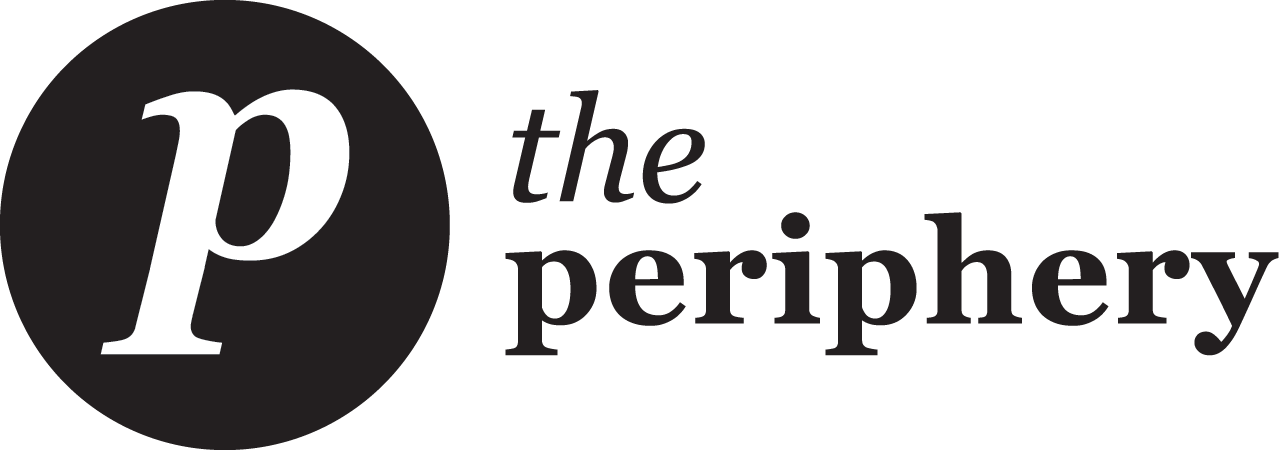Editors' Picks:
volume I
We celebrated the completion of our first year (April '14 - March '15) with a compilation of our best written and visual work from Issues I through XII, hand-picked by The Periphery staff.
//the periphery
Lunch Lines by The Periphery (Issue IV)
Forget all the media hoopla surrounding Michelle Obama’s healthy school lunch initiative! This inside account chronicles what the lunches in one Detroit high school really look like, as well as what Detroit students actually think of the meatballs, pineapple cups, and philly cheese steaks that the cafeterias are serving up. This is one of the funniest, most surprising pieces we’ve published so far.
Soliloquy: A West African Tragedy of Errors by Ramona Robbins Porter Newton (Issue X)
Ramona Robbins Porter Newton wrote poetry that you can feel and touch — poetry that makes you want to stand up and move and dance or cry or just look around. This particular poem implores you to listen, to heed all that is inside and around you: “Heed the talking drums!” she wrote, “Hear how they roar out your atrocities!”
Blackness in the New Detroit by Aaron Foley (Issue X)
In the wake of the national protests against police brutality, Aaron Foley wrestles with critical questions about what blackness means in Detroit, and how that meaning changes when it’s seen through the lens of various residents, reporters, gentrifiers, politicians, businessmen, police, suburbanites, activists, etc. As the rhetoric of a “New Detroit” prattles on, as community conversations pop up all over the city, as police misconduct continues, Foley challenges us to reconsider the deeper implications of Detroit’s racial dynamics.
To the Creators of The End of the Tour by Mark Jay (Issue VI)
So, they finally gave in and made a movie about David Foster Wallace … starring Jason Segal as the late author. Here is a message to the makers of the film urging them to reconsider. Instead of a bitter fan's vitriol, this letter is composed entirely of text from DFW’s own writings.
Bird Undertaker of St. Martin's by Joan Cullen (Issue XI)
This powerful and beautifully written piece manages to tie together Joan Cullen’s own spiritual journey, the complex social life of a convent, and “The Troubles,” the conflicts in Ireland and England in the late 20th century. The essay is an excellent example of The Periphery’s aim to offer new perspectives that aren’t often found in mainstream media.
Bad Film/Good Economics [Why There Are So Many Superhero Movies] by Philip Conklin (Issue VII)
Can money buy Americans better movies? Apparently not. Philip Conklin analyzes the economically driven film industry to show readers why, with all the remakes and sequels littering the movie roster at your local theater, not much is new.
A Resident's Analysis by Darren Reese-Brown & Mark Jay (Issue II)
Still one of our most read articles since it was published in our second issue, this probing look at a police raid on the east side of Detroit featured in-depth reporting that shed new light on a widely reported news item. This article has been featured in a variety of publications and is republished in the Berkeley Journal of Sociology.
Purple Moons by Rabab Ahmed (Issue VI)
A beautiful, poignant piece of writing. Rabab Ahmed’s lyrical prose can put a smile on any reader’s face, even as she plumbs the depths of a harrowing tale.
A Letter to the Dearborn Heights District 7 School Board by Atiya Haynes (Issue VII)
When Detroit teen Atiya Haynes was threatened with a 180-day suspension for a forgotten item in her purse, she couldn’t have imagined the power her voice would eventually carry. Her letter to the school board, published by The Periphery, is deeply personal while exposing the unfortunate symptoms of living in Detroit as a teen and the repercussions of the Zero-Tolerance policy in schools today.
Glitch it Good: Understanding the Glitch Art Movement by Mallika Roy (Issue IX)
We have officially entered the 21st century. Artists are revolutionizing the art world using ... computer glitches. In fact, there is an entire burgeoning glitch movement coalescing around the creative use of software error, digital file corruption, hardware malfunction, and algorithmic logic. What does this movement say about humans' relation to technology? This essay introduces the artistic, philosophical, and political consequences of glitch art to the layman.
Nico Pliskin
"Long-Haired Lizards Look at Lips on a Lamp"
Eli Stevick
"Untitled"
Christopher Batten
"Age of Innocence"
Sabato Visconti
"#12, Bygones"
Ronan Lynam
"Eel"
Tarah Douglas
"Self Portrait"
Jo Eun Huh
"Ceremony"
Oeishik
"Adi Shakti"
Ava Decapri
"Shut Eye Déjà Vu"
Karpov
"East Side Raid"


